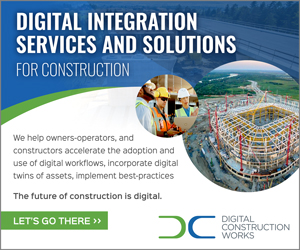Digital Twin has become a buzz-phrase of late and as such has possibly lost some of its originally intended meaning. There are accounts of a company using the term to describe digitized paperwork in lieu of the hard copy papers that previously recorded their product’s lifecycle. Others use the term to describe a digital model of something (that may have never been built). For the purposes of this conversation a digital twin is a digital model of a specific item within the real world. Think a one-to-one relationship, not a one-to-many.
Let’s look at what that means more specifically. When a product is created, it is likely made to specifications within some design, perhaps a CAD model. If that product is part of some critical or safety system and requires maintenance or is somehow life limited it is likely serialized. Having a serialized part allows for a unique product record. The original CAD model can be adjusted to reflect deviations from the original design, non-conformances, or rework before the part even leaves the manufacturing floor. This can be done either with human reporting or through automated inspection and processing data.
Now that product goes out into the wild. Things happen, it is real life after-all. The product may undergo time or cycle-based inspections. Those inspection results can be updated within the digital twin. Perhaps maintenance or repair is required, those activities could also be accounted for in the digital twin.
At the end of life (first life) the product may be returned to a remanufacturer as a core. Having all the data of inspection results, maintenance activities, and repair actions can help inform the remanufacturer of what processes are necessary to remanufacture the core into a useful like new part again or could inform the remanufacturer that the part cannot undergo additional processing without compromising safety.
The remanufacturing of the product can be built into the digital twin as the product is readied for its next life, details such as processes performed and inspection data can be added to the digital twin. This can facilitate grading and warranty decisions. It can also help inform the original manufacturer of trends that may be unexpected.
These are all things that can be done today. In the not-too-distant future the digital twin can be leveraged to do so much more. Think of the times you have sat at the airport waiting for your airplane to be repaired. Imagine that the digital twin could aid in predicting when preventative maintenance would be required – with real life use data and physics-based models this is possible. Those broken parts would not be surprised. Further, informed failure analysis models could be built into the digital twin, alerting an operator of the product when a product or part should be removed from service completely.
Some of the benefits of a digital twin are here today, and many have yet to be fully developed. It takes forward thinking and leadership to push to this future where our parts’ digital twins inform us, but that future has the opportunity to make our interactions with the machines around us safer and more reliable.
For more information Sarah Rogers, PMP, Manager, Manufacturing and Robotics Technologies Department, Southwest Research Institute, sarah.rogers@swri.org, (210) 522-4691.

















